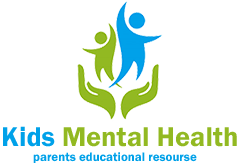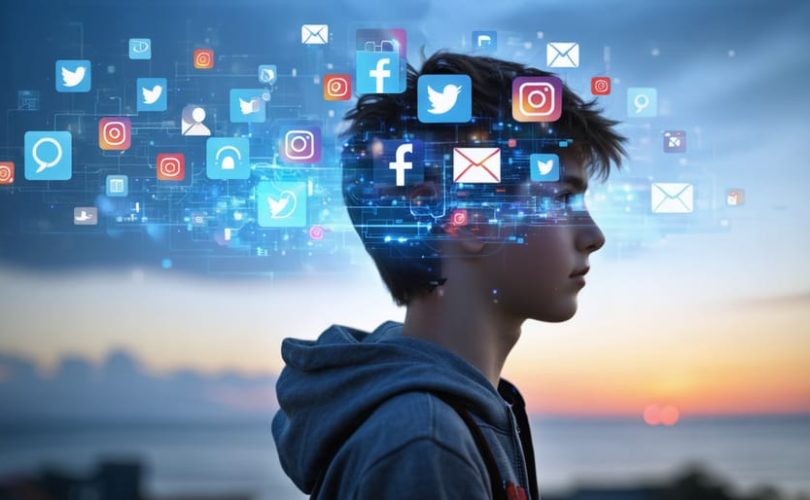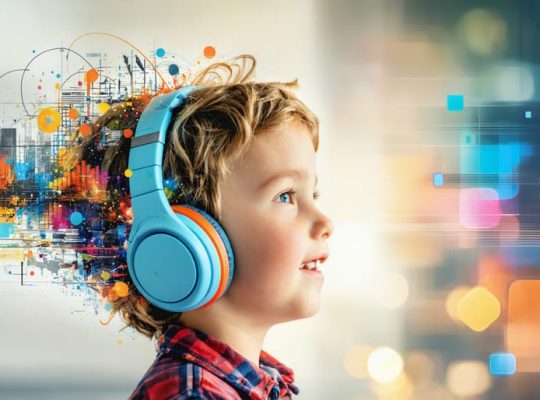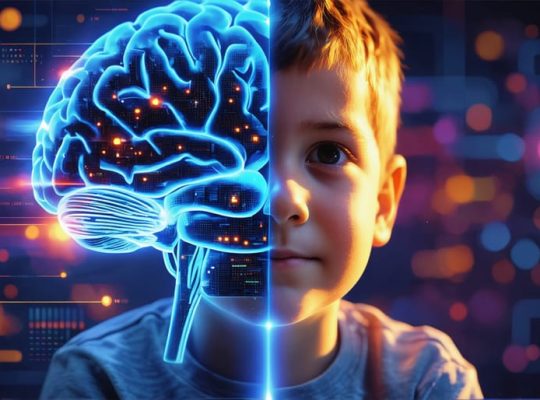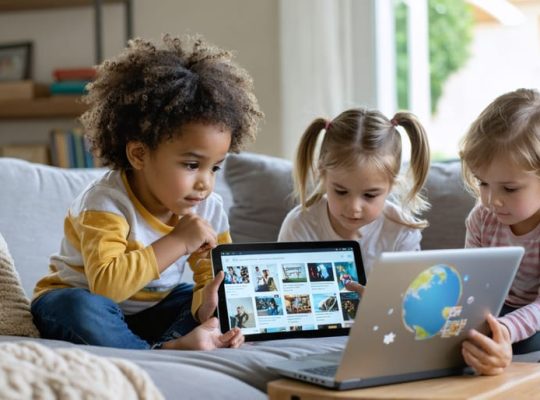In an era where social media increasingly media shapes your child’s worldview, parents face unprecedented challenges in navigating its effects on young minds. Recent studies reveal that 95% of teens have access to smartphones, spending an average of seven hours daily on social platforms – a reality that’s reshaping their social development, mental health, and academic performance.
While social media offers valuable opportunities for connection and creativity, it also presents significant risks. From anxiety and depression linked to constant comparison and FOMO (fear of missing out), to disrupted sleep patterns and decreased face-to-face social skills, our children’s well-being hangs in the balance. More concerning still, research from the American Academy of Pediatrics shows that excessive social media use correlates with lower self-esteem and increased vulnerability to cyberbullying.
As parents and educators, understanding these impacts isn’t just academic – it’s essential for protecting our youth while helping them build healthy digital habits. By examining both the benefits and risks of social media use, we can better guide young people toward balanced, mindful engagement with these powerful platforms that have become an integral part of their social landscape.
The Psychological Impact of Social Media Content
Self-Image and Body Perception
Social media platforms are increasingly filled with carefully curated, filtered, and edited images that present an unrealistic standard of beauty and success. For young people still developing their sense of self, this constant exposure to “perfect” bodies, faces, and lifestyles can have profound effects on their self-image and body perception.
Dr. Sarah Chen, a child psychologist, notes: “Teenagers are particularly vulnerable to comparing themselves to these idealized images. When they constantly see edited photos, they begin to view their natural appearance as inadequate.”
Research shows that 60% of teens feel pressure to look “perfect” in their own social media posts, often using filters and editing tools to modify their appearance. This cycle of comparison and modification can lead to decreased self-esteem, body image issues, and in some cases, anxiety and depression.
Emily, a 15-year-old student, shares: “I used to spend hours trying to get the perfect selfie. If my posts didn’t get enough likes, I felt like something was wrong with me. It took me a while to realize that what I was seeing online wasn’t real.”
Parents can help by having open conversations about digital manipulation in social media, encouraging critical thinking about online content, and reinforcing the value of authentic self-expression. Creating a supportive environment where young people feel accepted for who they are, rather than how they look online, is crucial for developing healthy self-image in the digital age.

Anxiety and Depression Triggers
Social media platforms can significantly impact young people’s mental well-being, often serving as triggers for anxiety and depression. Dr. Sarah Chen, a child psychologist, notes that “teenagers are particularly vulnerable to the emotional rollercoaster that social media creates, as their brains are still developing the ability to regulate emotions and resist peer influence.”
The constant comparison with carefully curated highlights of others’ lives can leave youth feeling inadequate or left out. Maya, a 16-year-old student, shares, “I often found myself feeling worse after scrolling through Instagram, seeing all these perfect lives and feeling like I didn’t measure up.”
Several key factors contribute to these mental health challenges:
– Fear of Missing Out (FOMO): Seeing friends gathering without them or experiencing exciting events can trigger feelings of exclusion and anxiety
– Like-seeking behavior: The constant pursuit of validation through likes and comments can create unhealthy attachment to social approval
– Cyberbullying exposure: Negative online interactions or witnessing others being bullied can lead to increased anxiety and depression
– Sleep disruption: Late-night scrolling affects sleep quality, which directly impacts mental health
– Perfectionism pressure: The need to maintain a perfect online image can create overwhelming stress
Research shows that teenagers who spend more than three hours daily on social media have a significantly higher risk of developing mental health issues compared to those who use it less frequently. However, it’s important to note that moderate, mindful use of social media can be part of a healthy social life when properly balanced with offline activities and relationships.
Social Media’s Influence on Behavior

Sleep Patterns and Academic Performance
One of the most significant impacts of social media on young people is its disruption of healthy sleep patterns, which directly affects their academic performance. Research shows that teens who use social media late into the night typically get less sleep and experience lower quality rest compared to their peers. The blue light emitted from devices, combined with the engaging nature of social media, can interfere with the body’s natural sleep-wake cycle.
Dr. Sarah Thompson, a pediatric sleep specialist, notes that “Many students who check social media before bed report difficulty falling asleep and feeling unrested the next day.” This fatigue carries over into the classroom, where teachers observe decreased attention spans and reduced participation. Similar to other screen time effects, excessive social media use near bedtime can create a cycle of poor sleep habits.
A recent study found that students who limit their social media use in the evening hours show improved academic performance and better sleep quality. Emma, a high school sophomore, shares, “Once I started putting my phone away an hour before bed, I noticed I could focus better in class and even my grades improved.”
To support healthy sleep patterns, experts recommend:
– Creating a “digital sunset” time 1-2 hours before bed
– Keeping devices out of the bedroom
– Establishing consistent bedtime routines
– Using built-in device features to limit nighttime notifications
These simple adjustments can help young people maintain both their social connections and their academic success while ensuring they get the rest they need to thrive.
Social Skills and Real-world Relationships
Social media has significantly transformed how young people build and maintain relationships, creating both opportunities and challenges for their social development. While platforms like Instagram and Snapchat enable teens to stay connected with friends, they can also affect the quality of face-to-face interactions and emotional bonds.
Many adolescents report feeling more comfortable expressing themselves online than in person, which can lead to decreased confidence in real-world social situations. Dr. Sarah Chen, a child psychologist, notes, “I’ve observed teenagers struggling to maintain eye contact or read social cues because they’re more accustomed to emoji-based communication.”
Parents often share concerns about their children preferring virtual connections over physical meetups. “My daughter used to have friends over every weekend,” says Monica, mother of a 14-year-old. “Now she mainly interacts with them through social media, even when they’re in the same neighborhood.”
However, social media isn’t entirely detrimental to relationship building. It can help shy or socially anxious youth find like-minded peers and practice social skills in a less pressured environment. The key lies in finding balance and maintaining meaningful offline connections alongside digital ones.
To support healthy social development, encourage regular face-to-face interactions through:
– Family dinners without phones
– Organized group activities or sports
– Regular meetups with friends
– Volunteering or community involvement
– Screen-free social events
Remember that social media should complement, not replace, real-world relationships. By helping young people maintain this balance, we can ensure they develop strong interpersonal skills while benefiting from digital connectivity.
Content Consumption Patterns
Short-form vs. Long-form Content
Today’s social media landscape presents young users with two distinct types of content that shape their content consumption patterns. Short-form content, like TikTok videos and Instagram Reels, delivers quick, bite-sized entertainment that can be incredibly engaging but may impact attention spans. Many parents report their children struggling to focus on longer activities after regular exposure to these rapid-fire formats.
On the other hand, long-form content such as YouTube videos and blog posts requires sustained attention and often provides more in-depth information. While this format can be beneficial for learning and critical thinking, many young people find it increasingly challenging to engage with longer content as they become accustomed to shorter formats.
Dr. Sarah Chen, a child development specialist, explains: “When children primarily consume short-form content, their brains adapt to expect quick rewards and constant stimulation. This can make it harder for them to develop the patience and focus needed for activities like reading books or completing homework.”
To help youth maintain healthy attention spans, experts recommend balancing both content types. Parents can encourage longer engagement periods through shared reading time, engaging documentaries, or creative projects while allowing moderate consumption of shorter content formats in appropriate contexts.
Algorithm-driven Content Exposure
Social media platforms use sophisticated algorithms to determine what content appears in young users’ feeds, creating a personalized digital environment that can significantly impact their online experience. These recommendation systems analyze users’ past behavior, including likes, comments, and time spent viewing specific content, to predict and serve similar material.
Dr. Sarah Chen, a child psychologist specializing in digital media, explains, “These algorithms create what we call ‘feedback loops.’ When a teenager shows interest in certain content, they’re shown more of the same, which can lead to a narrow view of the world and potentially reinforce unhealthy interests or behaviors.”
For example, if a young person spends time viewing content about body image, the algorithm might increasingly show them related posts about dieting, exercise, or appearance. This can inadvertently create an echo chamber that amplifies specific messages or viewpoints.
Parents should be aware that these systems are designed to maximize engagement, often leading young users down content “rabbit holes” that can keep them scrolling for hours. The continuous stream of perfectly curated content can make it challenging for youth to disengage from their devices.
Understanding how these algorithms work empowers families to take control. Setting time limits, regularly reviewing recommended content with children, and encouraging diverse interests can help break the cycle of algorithm-driven content consumption and promote a healthier relationship with social media.
Protective Strategies for Parents
Setting Boundaries
Establishing healthy media boundaries is crucial for protecting your child’s mental well-being in today’s digital world. Start by creating a family media agreement that outlines clear rules about screen time, appropriate content, and safe social media practices. Consider implementing device-free zones in your home, such as the dinner table and bedrooms, to encourage face-to-face interaction and better sleep habits.
Use parental controls and privacy settings on all devices and social media platforms. These tools can help limit access to inappropriate content and protect your child’s personal information. However, remember that technical solutions should complement, not replace, open communication with your child about online safety.
Set specific time limits for social media use and encourage regular digital breaks. Many families find success with a “social media curfew” – no social media use one hour before bedtime. This helps prevent sleep disruption and gives young minds time to wind down.
Make sure to model healthy digital habits yourself. Children often learn by example, so demonstrate balanced technology use and regular unplugged activities. When setting boundaries, explain the reasoning behind them and involve your child in the decision-making process. This approach helps them understand the importance of digital wellness and develops their self-regulation skills.
Remember to be flexible and adjust boundaries as your child matures, always maintaining open dialogue about their online experiences and concerns.
Open Communication
Starting conversations about social media with your children doesn’t have to be challenging. The key is to create a safe, judgment-free environment where they feel comfortable sharing their experiences. Begin by showing genuine interest in their online activities – ask about their favorite apps, content creators they follow, or games they enjoy.
Make these discussions a regular part of your routine, perhaps during dinner or car rides. Share your own social media experiences and concerns, making the conversation two-way rather than a lecture. Remember to listen more than you speak, and validate their feelings even if you disagree with their perspective.
Consider setting aside dedicated “tech talk” time each week where family members can discuss their digital lives openly. Use open-ended questions like “How do you feel when you see your friends’ posts?” or “What’s the best and most challenging part of being on social media?”
When concerns arise, work together to find solutions. Instead of imposing strict rules, involve your child in creating healthy boundaries. This collaborative approach helps them develop critical thinking skills about their social media use. If they share uncomfortable experiences, respond with understanding and support rather than panic or punishment.
Stay informed about current social media trends and challenges to make these conversations more relevant and meaningful. Your child is more likely to open up when they feel you understand their digital world.
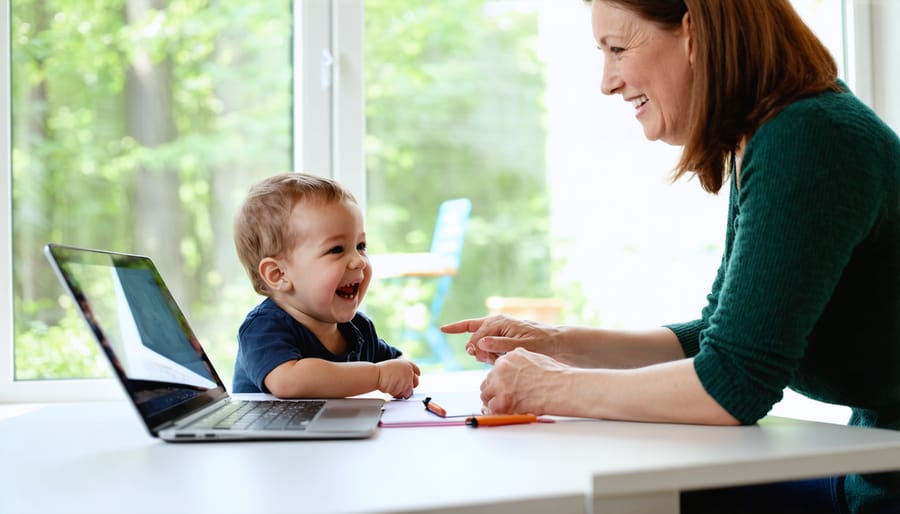
Social media’s influence on our youth is complex and far-reaching, but understanding its effects empowers us to take positive action. While digital platforms offer opportunities for connection and creativity, we must acknowledge their potential impact on mental health, self-esteem, and social development. By maintaining open conversations with young people, setting healthy boundaries, and modeling responsible digital habits, we can help them navigate the social media landscape safely. Remember, it’s not about completely restricting access, but rather fostering digital literacy and emotional resilience. Together, we can help our youth harness the benefits of social media while protecting their wellbeing. Let’s commit to being present, supportive guides in their digital journey, ensuring they develop into confident, well-adjusted individuals in both online and offline worlds.
